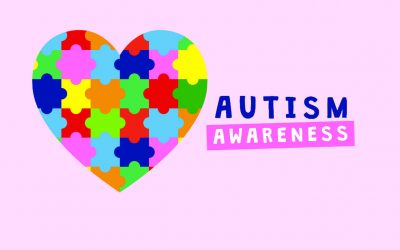25 Adopted Boys Find A Home In One House
So, you think you’ve “got it tough” with your one or two ASD kids?
By Janet Kornblum, USA Today
Huntington Beach, Calif. – Ann Belles was only 5 in 1968 when her mother took her to see Oliver, the movie musical about orphan boys based on Charles Dickens’ Oliver Twist. But in that darkened theater, her fate was sealed.
“I walked out of that movie saying, ‘I’m going to adopt orphan children.’ I dreamt about it. I thought about it. I got books on orphans. I was consumed by it.”
Many of us forget our childhood dreams. Today, Belles, 40, lives hers.
She and her husband, Jim Silcock, 41, have adopted 25 boys – boys who have
been abandoned, abused, rejected and usually labeled unadoptable; boys
from across town and across the world; boys with disabilities from autism to
mental retardation to attachment disorders; boys now ranging in age from 3
to 25 who represent a panoply of ethnicities.
This is the Silcock family: a mom with a dream; a dad who is
quadriplegic and has a love big enough to make his wife’s dream his own;
and their children: 25 boys who had nowhere else to go.
“I tell people that it’s like any other family – except extremely
large,” says Hunter, 16. When Hunter, who uses a wheelchair and has
cerebral palsy, joined the Silcock family five years ago, he was considered
borderline retarded. Today, he tests as gifted and has appeared on TV in
three episodes of Boston Public.
The Silcock family is not like any other family. “There are obviously people all over the country who adopt individual children and groups of children with special needs,” says Adam Pertman, executive director of the not-for profit Evan B. Donaldson Adoption Institute in New York. But “it is unusual for anybody to adopt this many children.”
The news last month about a New Jersey family accused of starving
their adopted foster children has focused attention on the nation’s foster
care and adoption system. Sometimes the system is abused, Pertman says,
but more often, “financial incentives from state and federal governments are
helping to increase special-needs adoptions.”
The Silcock family “is the good side of that bad story,” he says.
Adoption of children in foster care, where many of the Silcock boys
come from, is on the rise. About 130,000 of the 540,000 children in foster
care nationwide are waiting to be adopted. About 50,000 a year actually
get adopted, says Carol Emig of the Pew Commission on Children in Foster Care.
In the past five years, thanks largely to increased federal financial incentives and state initiatives to adopt, 33 states and Washington, D.C., have doubled their adoptions from foster care, Emig says.
But experts note that many children – especially those who are older and disabled – remain unadopted. “There is no line at the door for kids with special needs of any age,” Pertman says. “People want healthy infants first and then move on from there.”
Not Belles. She tells agencies to give her the child who has been rejected by everyone else.
“We’re not willing to compete for a child,” she says. “There are plenty of children who don’t have any opportunities to be matched with more typical families.”
Some of the children came from families that couldn’t cope with
their needs. Many came from parents who caused their disabilities.
One of the Silcock boys was nearly drowned by his parents and left
brain-damaged. Another boy was taken from his family after doctors
discovered 13 bones that had been broken but never set. One boy had never
touched grass because he spent his first years in the hospital.
Five boys come from overseas – Belles and Silcock flew to Eastern Europe to adopt one. Even though these boys may not have significant physical disabilities, they came with emotional and learning difficulties – and no familiarity with U.S. customs. After Halloween, some of the boys assumed a knock on a stranger’s door would yield candy every time. Many of these boys went “from the Stone Age to The Jetsons” in the USA, Belles says.
Kids can take their time Though entering a large family is not for everybody, Belles says, it can actually make things easier. “Some kids, especially kids with attachment disorder or kids who are older, can come to our family and just kind of slip in. They don’t need to bond with us right away. They can bond to the dog. They can bond to another sibling. They can feel safe.”
Though some people question whether one family can – or should –
take on this many kids, experts say there is no magic number. What is important is assessing each family and each placement very carefully, says Sue Badeau, deputy director of the Pew Commission and the mother of 20 adopted and two biological children in Philadelphia.
“Have some families gotten bigger than they should have gotten and have some children been inappropriately placed in large families? Absolutely. Does that mean no family should ever have a large number of children or that no children thrive in large families? No. I don’t think it’s an either/or kind of extreme.”
Those who know the Silcock family say it works. Says Joan Thompson, a nurse to one of the boys: “They grow and blossom when they come here. You just see the difference.”
Neighbor Margaret Lysaght says the five vans and constant remodeling of the now-4,000-square-foot home are sometimes small nuisances, but she doesn’t mind. “Those kids need a break, and she’s doing it for them. When I see those kids out there getting ready to get on those buses, they all look happy. … And I’ve never heard any crying or screaming or any sign of abuse or neglect.”
But it’s not like Belles and Silcock work miracles with their boys, Belles is quick to say. “Their disabilities will not go away. But we have seen kids talk who couldn’t talk before and walk who couldn’t walk before. It has a lot to do with the dynamics of the family. Everybody pulls their weight.”
Walk into the Silcock home, and at first blush you might think it’s an institution: Wheelchairs fill the garage. Pictures that line the walls of the wide, clean hallways are careful portraits showing each boy at his best. Boys with every imaginable disability inhabit the nine bedrooms. And nurses, teachers and aides buzz around the home, cleaning, tending to the boys, organizing medicines or putting in yet another load of laundry.
On the typical fall morning, four boys gather around a wide-screen TV to play a video game. Five Nintendo GameCubes are scattered throughout the house. Isn’t that excessive? Silcock explains: “You get 20 guys and one GameCube, what do you think will happen? There’s going to be a war, and it’s going to be Lord of the Flies. The strongest guy will take it.”
Then Jonathan, 18, marches in and ends the game. “Mom told me to
turn off the TV,” he says.
And then, in what seems like a choreographed performance, boys grab
backpacks in the front hall and run or wheel each other out the front
door.
Vans are loaded. Children are put into buses and strapped in. It’s time to go to school. Most attend public school; eight have classroom aides. Three boys linger at the breakfast tables. Phillip, 10, from a Siberian orphanage, sits next to 7-year-old Justin, who is immune-compromised and whose kidneys are failing. He’s the only boy who can’t attend school. Phillip wipes Justin’s face, then picks up a spoon and coaxes him to eat just a little bit more before Phillip has to leave. Older boys routinely help younger ones, be it with their food or companionship, cleaning their rooms or doing homework.
If they have a really big problem – such as getting in trouble at school – the kids go to mom and dad who “better” hear about it from the boys rather than the teachers, Silcock says.
One day at a time By 8:15 a.m., the suburban house on the quiet cul-de-sac in this Southern California beach town settles down. The adults tend to business, cleaning or grocery shopping. They also attend parent-teacher conferences, organize medical care and discuss the progress of individual boys with aides.
School hours and weekends – when the boys are shuttled to venues from soccer games to Disneyland – are also when Belles and Silcock run their business, Supported Living Services. They arrange services for adults with disabilities who want to live in their own homes. They have 11 clients and are able to generate a “good income,” Belles says.
In addition, the family receives financial help through the federal Adoption Assistance Program, an incentive program designed to encourage parents to adopt children with special needs, though it applies only to children younger than 18 adopted domestically. The Silcocks receive an average of $1,100 a month from AAP for each of 13 children who are eligible.
That money pays for everything from nursing, counseling and physical
therapy to adaptive equipment and specialty clothing.
Belles has some inheritance money, and she and Silcock apply for
grants.
Most of the boys – except those from overseas – also qualify for California Medicaid (called Medi-Cal), which pays for most of their medical care. Belles is lucky, too, that she bought her home in 1989 before California housing prices were out of her reach.
But even with a variety of income sources, Silcock says that he has, on occasion, gotten cash advances on the credit cards.



